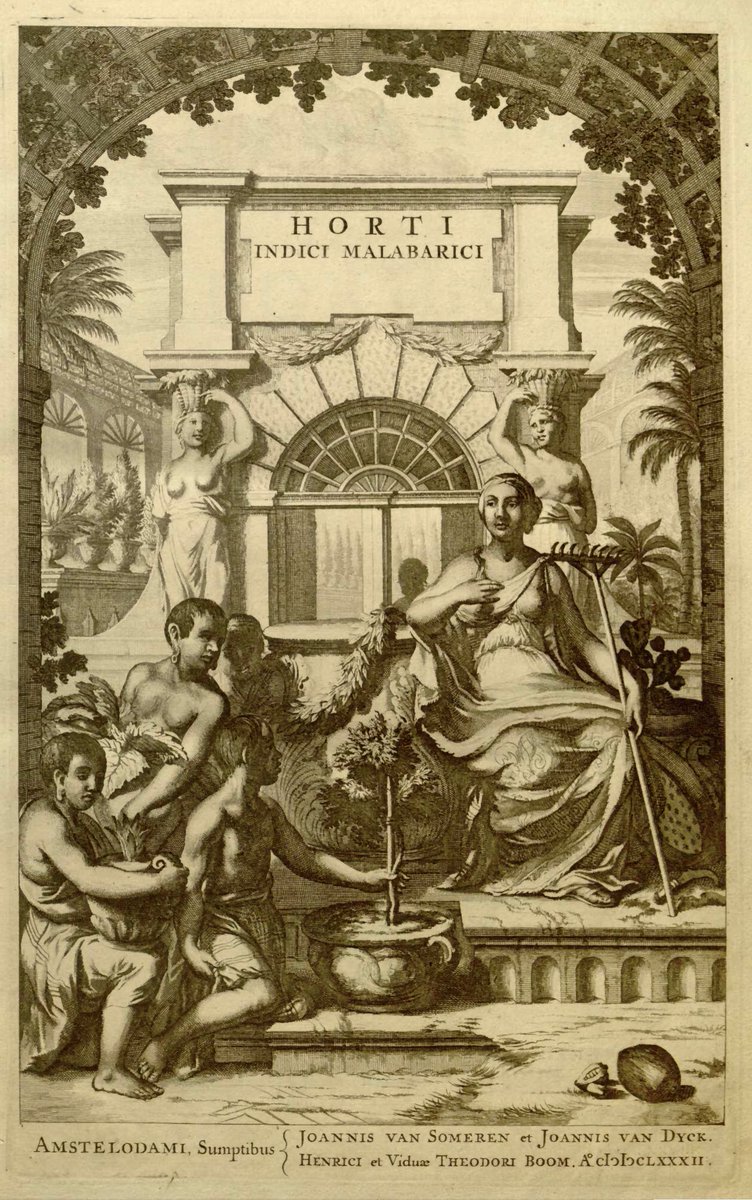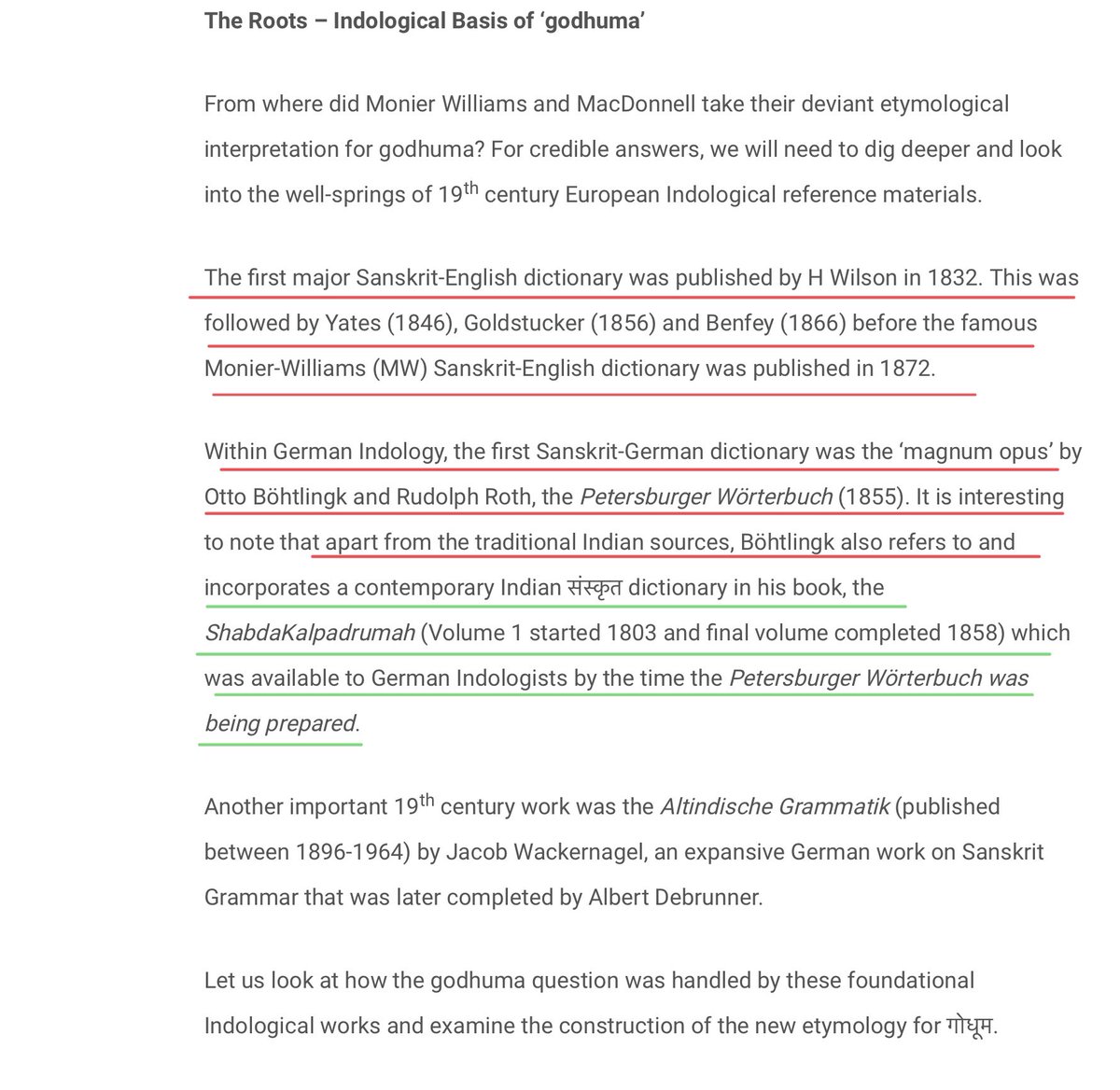
Early Evidence for भारतीय writing
[QT to avoid clutter]
While Yaskacharya’s Nirukta is likely earlier, the act of “writing” seems very well attested in Ashtadhyayi
Multiple dhatus / sutras exist that point to this reality
Writing was obviously well developed by this time
[QT to avoid clutter]
While Yaskacharya’s Nirukta is likely earlier, the act of “writing” seems very well attested in Ashtadhyayi
Multiple dhatus / sutras exist that point to this reality
Writing was obviously well developed by this time
https://twitter.com/meghkalyan/status/1480115076707225601

धातुः लिख्
The औपदेशिक form is ‘लिखँ अक्षरविन्यासे’
अक्षरविन्यास - inscribing letters
Even though लिख also has the sense of ‘scratch’ it seems obvious that writing is involved due to अक्षरविन्यासे।


The औपदेशिक form is ‘लिखँ अक्षरविन्यासे’
अक्षरविन्यास - inscribing letters
Even though लिख also has the sense of ‘scratch’ it seems obvious that writing is involved due to अक्षरविन्यासे।



Paniniya Shiksha ३२ says the 6 varieties of अधमपाठकाः include लिखितपाठकः - those who read from texts/written matter instead of from memory
Why लिखितपाठकः if written texts are NOT available?
Also शिरः कम्पी - those who read while shaking/ rocking their head !😀
Why लिखितपाठकः if written texts are NOT available?
Also शिरः कम्पी - those who read while shaking/ rocking their head !😀

There are multiple Sutras that highlight elements of ‘writing’ via
लिख्
६।३।५० हृदयस्य हृल्लेखयदण्लासेषु
हृल्लेखः हृदयं लिखतीति अण्।
MW also states ‘furrows in the heart’- but a sense of ‘writing’ can also be easily evident since ‘scratching/marking’ is the means of writing


लिख्
६।३।५० हृदयस्य हृल्लेखयदण्लासेषु
हृल्लेखः हृदयं लिखतीति अण्।
MW also states ‘furrows in the heart’- but a sense of ‘writing’ can also be easily evident since ‘scratching/marking’ is the means of writing



The ग्रन्थ् धातुः - Book
The औपदेशिक form is
ग्रन्थँ बन्धने - which means to TIE
There are other possible meanings incl. ‘verse in अनुष्टुप् form’ etc - but the ‘tie’ element clearly reflects a physical ‘book’


The औपदेशिक form is
ग्रन्थँ बन्धने - which means to TIE
There are other possible meanings incl. ‘verse in अनुष्टुप् form’ etc - but the ‘tie’ element clearly reflects a physical ‘book’



Various sutras refer to ग्रन्थ
४।३।८७ अधिकृत्य कृते ग्रन्थे
सौभद्रः - a book relating to Subhadra is called Saubhadra
Clearly unless you have written matter that needs to be tied together, there can be no book!

४।३।८७ अधिकृत्य कृते ग्रन्थे
सौभद्रः - a book relating to Subhadra is called Saubhadra
Clearly unless you have written matter that needs to be tied together, there can be no book!


६।३।७९ १०१० ग्रन्थान्ताधिके च
In the case of a book (literary work) स substitutes for सः for a sense or ‘upto the end’ [of the book]

In the case of a book (literary work) स substitutes for सः for a sense or ‘upto the end’ [of the book]


१।३।७५ समुदाङ्भ्यो यमोऽग्रन्थे
Here refers to the verb ‘yam’ when it does NOT refer to a book takes the Atmanepadi form

Here refers to the verb ‘yam’ when it does NOT refer to a book takes the Atmanepadi form


४।३।११६ कृते ग्रन्थे
When something is made that is a book, then an affix comes after the word
वाररुचाः


When something is made that is a book, then an affix comes after the word
वाररुचाः



Mahabharata (written prior to Maharshi Panini) gives clear references to writing & keeping written accounts
E.g: लेखकः -> scribe. Possible only if writing is present
The 3 reference lines - BORI Critical edition



E.g: लेखकः -> scribe. Possible only if writing is present
The 3 reference lines - BORI Critical edition




• • •
Missing some Tweet in this thread? You can try to
force a refresh















